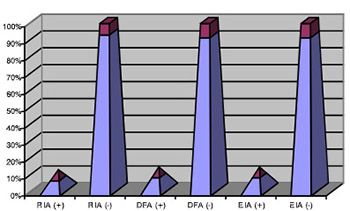Demonstration of different endocervical staining methods and their usefulness in the diagnosis of the chlamydial infection in exfoliated cells advantages and disadvantages
DOI:
https://doi.org/10.17305/bjbms.2004.3459Keywords:
Endocervical Stain, Giemsa, Papanicolaou, Iodine, Immunofluorescence, Chlamydia TrachomatisAbstract
Microscopic demonstration of chlamydial inclusions within cells offered the first laboratory procedure supporting the clinical diagnosis of chlamydial infection. Our aim is to evaluate the usefulness of different endocervical staining methods in diagnosis of Chlamydia trachomatis (CT) infection within exfoliated cells of the endocervix. The cytological test for the detection of chlamydial inclusions in genital tract infection, though not as sensitive and specific as isolation in the cell culture monolayers, is still of the diagnostic value. The present study discusses the collection of clinical smears for microscopic examination, their preparation; fixation and staining of slides by a variety of staining methods that have been used to detect Chlamydia in clinical smears and biopsies. Most of these methods such as Giemsa stain, Papanicolaou, iodine, and immunofluorescence (IF) using monoclonal antibodies, are based on the combination of dyes designed to obtain optimum differentiation of the various structures. The utilization of different endocervical smear stains together with the clinical information can be used to identify women at high risk for CT infection.
Citations
Downloads

Downloads
Published
Issue
Section
Categories
How to Cite
Accepted 2018-04-05
Published 2004-02-20









